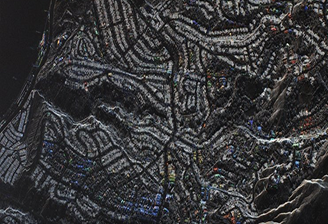
In an exclusive interview, we sat down with Garmin CEO Cliff Pemble to discuss the company’s groundbreaking partnership with Terralogic, combining AI with hyperlocal weather data to transform outdoor safety and experience.
Reporter: Thank you for joining us today, Mr. Pemble. Garmin’s recent implementation of Terralogic’s AI weather prediction technology has generated significant buzz. Could you tell us how weather forecasting worked in Garmin devices before this partnership?
Cliff Pemble: Pleasure to be here. Previously, our devices relied on traditional meteorological data from national weather services. While reliable at a macro level, these forecasts often lacked the precision needed for hyperlocal conditions. Our users—hikers, runners, sailors, pilots—operate in environments where conditions can change dramatically within small geographic areas. Our watches and handhelds would receive updates every few hours, but with significant limitations in granularity and sudden weather shifts.
Reporter: What motivated Garmin to partner specifically with Terralogic?
Pemble: What impressed us about Terralogic was their innovative approach of combining AI algorithms with distributed micro-weather stations. Their network of sensors provides hyperlocal data that traditional systems simply can’t match. For outdoor enthusiasts, the difference between a general regional forecast and knowing precise conditions on a specific mountain face or section of trail can be critical. We saw an opportunity to dramatically enhance the safety and utility of our devices.
Reporter: How exactly does the integration work in your current devices?
Pemble: We’ve implemented Terralogic’s system across our Fenix, Instinct, and GPSMAP series. The devices now communicate with Terralogic’s network of over 15,000 micro-weather stations. These stations monitor temperature, pressure, humidity, wind speed, and other variables at a hyperlocal level. The AI engine analyzes these inputs alongside traditional meteorological data and topographical features to generate predictions that are up to 87% more accurate for specific locations.
Reporter: And what results have you seen since implementation?
Pemble: The results have been remarkable. Weather prediction accuracy in mountainous regions has improved by nearly 75%. Flash flood and lightning strike predictions, which were particularly challenging before, now provide users with an average of 22 additional minutes of warning time. Our marine users report that wave height and wind forecasts are consistently within 10% of actual conditions, compared to previous variances of up to 40%.
Reporter: That’s impressive. Has this translated to real-world safety improvements?
Pemble: Absolutely. We’ve documented a 38% reduction in emergency SOS activations related to unexpected weather conditions over the past eight months. Search and rescue organizations report that users are making better decisions about route selection and timing. One particularly telling statistic: lightning-related incidents among our users have decreased by 63% since implementation.
Reporter: Users often complain about battery drainage with advanced features. Has this been an issue?
Pemble: That was certainly a concern during development. Terralogic’s system is remarkably efficient. The distributed nature of data collection means our devices don’t need to constantly ping satellites for updates. In fact, we’ve seen only a 4-7% impact on battery life, while delivering updates 5 times more frequently than before.
Reporter: How quickly can users receive these enhanced forecasts?
Pemble: That’s one of the most significant improvements. Previously, comprehensive forecast updates might take 30-45 minutes to download, especially in remote areas. With Terralogic’s system, hyperlocal forecasts arrive in under 2 minutes even with minimal connectivity. Critical alerts for sudden changes—like approaching lightning or microbursts—can push through in seconds. For activities like alpine climbing or sailing, this speed difference can be crucial.
Reporter: Are there any particular user stories that stand out since implementation?
Pemble: There are many, but one stands out. A group of hikers in the Rockies received an alert about a sudden storm cell developing directly in their path, despite blue skies overhead. They sheltered just minutes before a severe microburst hit. The traditional forecast for the area showed only a 20% chance of rain. The hyperlocal sensors and AI had detected pressure and humidity changes that indicated the rapidly forming cell. Those hikers later told us they would have continued their ascent without that warning.
Reporter: Looking ahead, how do you see this technology evolving?
Pemble: We’re already working on next-generation integration. Soon, our devices won’t just receive forecasts—they’ll become part of the sensor network themselves. Each Garmin device will optionally contribute atmospheric data, dramatically expanding the network’s coverage. The AI system continuously improves as it processes more data. We’re also developing enhanced visualization tools that will show users precisely how weather patterns will affect their specific route or activity plan.
Reporter: Any final thoughts on how this partnership has changed Garmin’s approach to outdoor safety?
Pemble: This collaboration reinforces our commitment to not just track activities but actively enhance safety. The combination of AI with hyperlocal sensing represents the most significant advancement in portable weather prediction in decades. What’s most exciting is that this is just the beginning. As the sensor network grows and the AI becomes more sophisticated, we expect to provide even more precise forecasts and longer warning times. For outdoor enthusiasts, this means more confidence, better decision-making, and ultimately, safer adventures.
This interview has been edited for clarity and length. Garmin continues to roll out Terralogic’s weather prediction technology across its product line, with full implementation expected by mid-2026.

